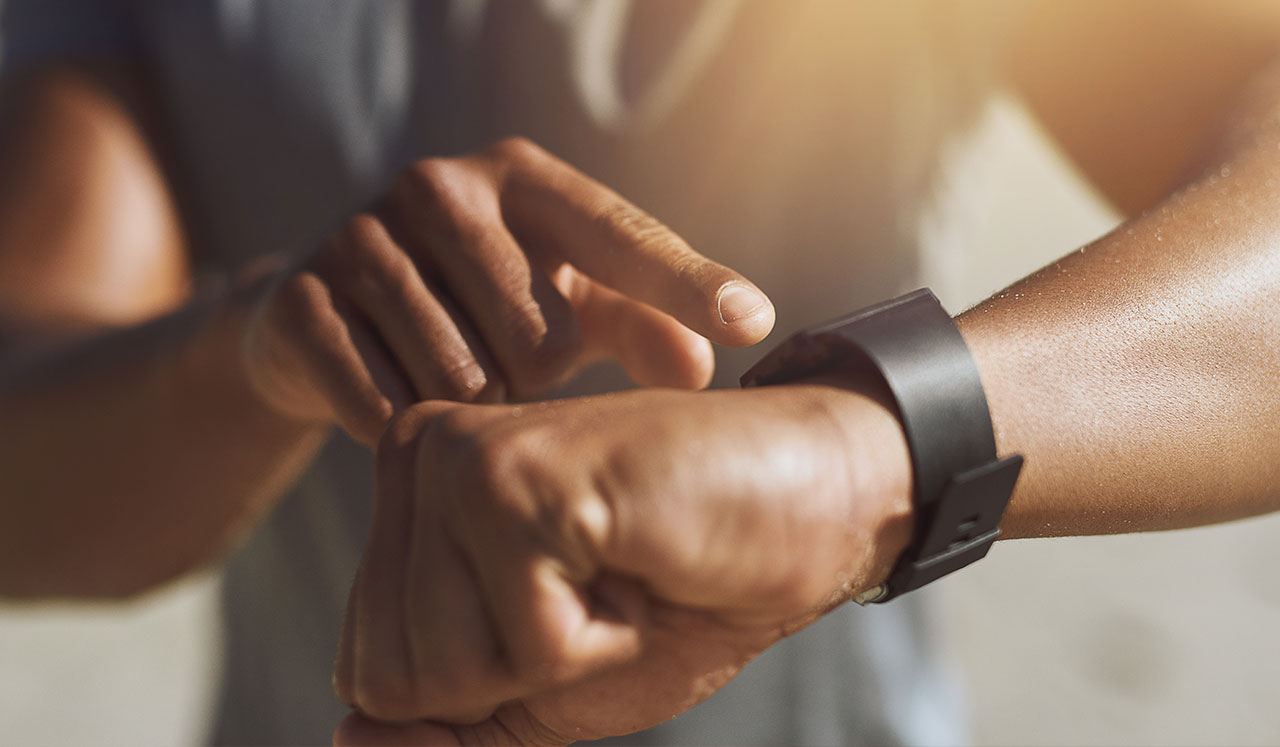Don’t sweat it? No—do. To maximize gym time and effectiveness you must find the right approach.
That’s why we turned to fitness and nutrition specialists at Memorial Hermann | Rockets Sports Medicine Institute for answers to the most common—and important—questions exercisers ask their trainers.
Q. Is food or fitness more important in weight loss?
A. According to Sports Dietitian Molly Vega, it depends on your health goals, not just the scale.
Those who need to improve their blood profile quickly—such as lowering hemoglobin A1C, a biochemical marker for type 2 diabetics—should focus on what they eat.
But if you don’t want to lose muscle along with pounds, you need to factor in fitness as much as diet.
Once you’ve neared your weight-loss target and want to maintain it, your focus should shift to exercise. “Research has shown that physical activity is the primary component that aids individuals in avoiding weight regain,” says Vega.
Q. Does a pre-workout drink help?
A. Pre-workout drinks containing caffeine or carbohydrates can boost your endurance and post-sweat recovery, Vega says.
Consuming caffeine 10 to 60 minutes before a sweat session boosts mental focus, alertness, endurance and strength-training performance. But don’t go overboard. You’ll get results with as little as 1 milligram per kilogram (about 2.2 pounds) of body weight.
Some caffeinated pre-workout drinks also contain other heart-racing ingredients, such as ephedrine, guarana, ginseng or gingko biloba.
These stimulants may not be identified on labels, and quantities may vary greatly from bottle to bottle, since the U.S. Food and Drug Administration does not supervise many pre-workout drinks and supplements. “It’s important to use a FDA-tested and clean product,” Vega says.
Also concerning is that these energizers hike your heartbeat, blood flow and blood pressure—which could be dangerous. “Not everyone responds the same to caffeine, and high doses can cause medical issues,” Vega says.
Those under 18 are particularly at high risk, in part due to their lower body weight.
Small amounts of carbohydrates, your body’s go-to energy source, are common in pre-workout drinks. Studies show that they can improve endurance and performance for workouts lasting longer than 45 minutes.
But they aren’t needed in short bouts of exercise—and they can contain a lot of calories. Vega recommends half a banana over a sugary beverage.
Other ingredients such as nitrates (beet juice, anyone?) and beta-alanine may be trendy, but their efficacy is not as well researched as caffeine and carbs.
Before using any nutritional supplements beyond caffeine and carbohydrates, talk with your doctor or a sports-specializing registered dietitian.
Or grab fruit. It’s nutritious and has fiber that will pay off in performance—and pounds lost.
Q. Are there benefits to working out in the morning vs. night?
A. Listen to your body. “Don’t ignore aches and pains,” says Kimberly Gandler, human performance coordinator. “Consistent foot, ankle or knee discomfort most likely means you need to change shoes.”
Adding to the challenge are categories within running shoes, the most common being neutral or stability running shoes.
“Also mattering are heel to toe drop, cushioning and level of stability,” she says. “The combination best for you depends not only on your anatomy, but also on your mileage and running form.”
Gandler suggests seeking a running professional’s advice to help you find what’s best for you. “An extensive video-based gait analysis can help with shoe fit as well as identifying structural problems that raise your injury risk when running,” says Gandler.
Even with the right shoes you most likely should replace them every 300 miles.
Q. What is a good target heart rate for fat burning? Are weight, height and age factors?
A. Yes, those elements, along with genetics and fitness level factor into your ideal target heart rate according to Gandler.
That’s why the most common max heart rate calculator of 220 minus your age tends to be inaccurate and inadequate for many.
If you wish to burn fat, your workout intensity should be low and the duration long.
The best way to gauge this is with a rating of perceived exertion. The intensity should feel like something you can sustain for hours, but hard enough that you feel some effort. On a 0-10 scale with 0 sitting in a chair and 10 as hard as you can possibly go, the fat-burning intensity typically is 2-3, or a conversational pace.
But don’t forget the other elements of changing your body composition: your diet and overall fitness, she says. “These also are vital to reaching your goals.”


